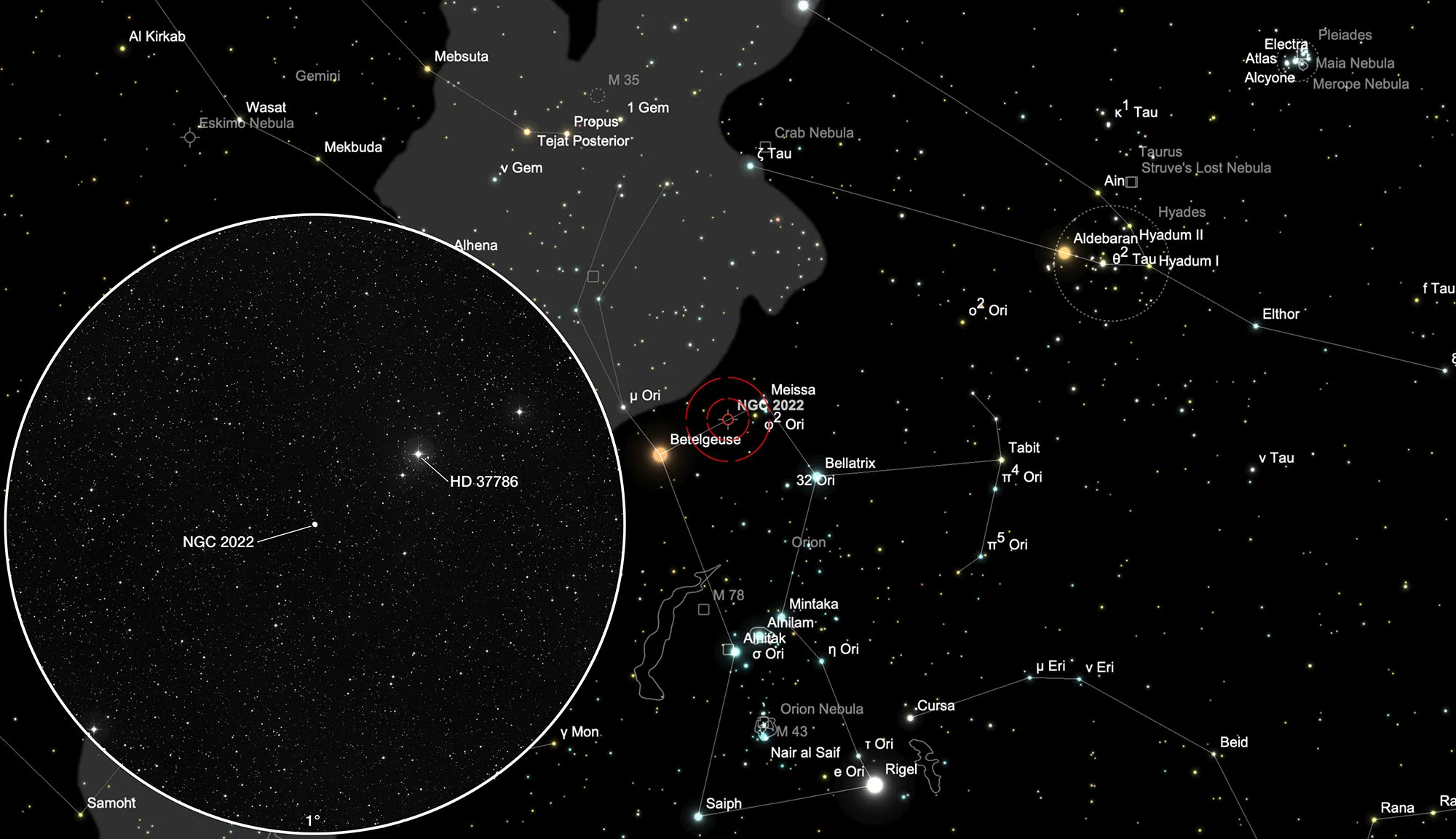Planetary Nebula NGC 2022
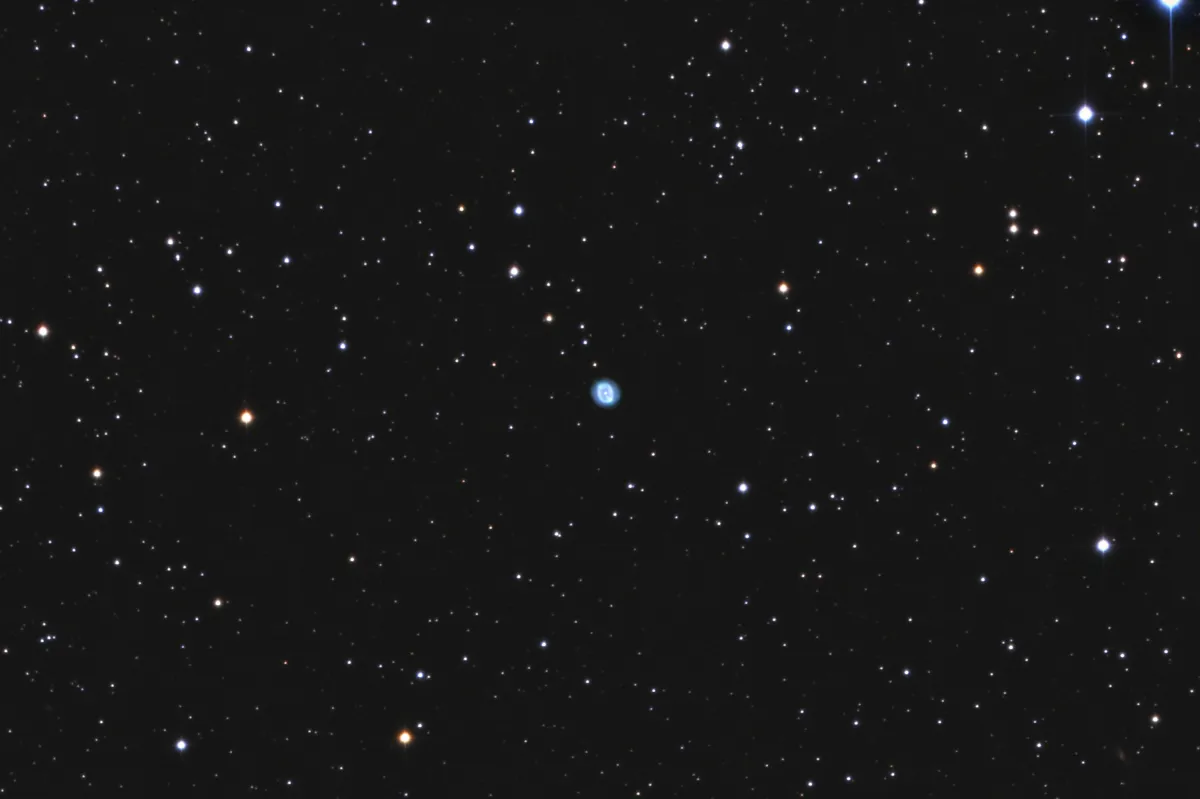
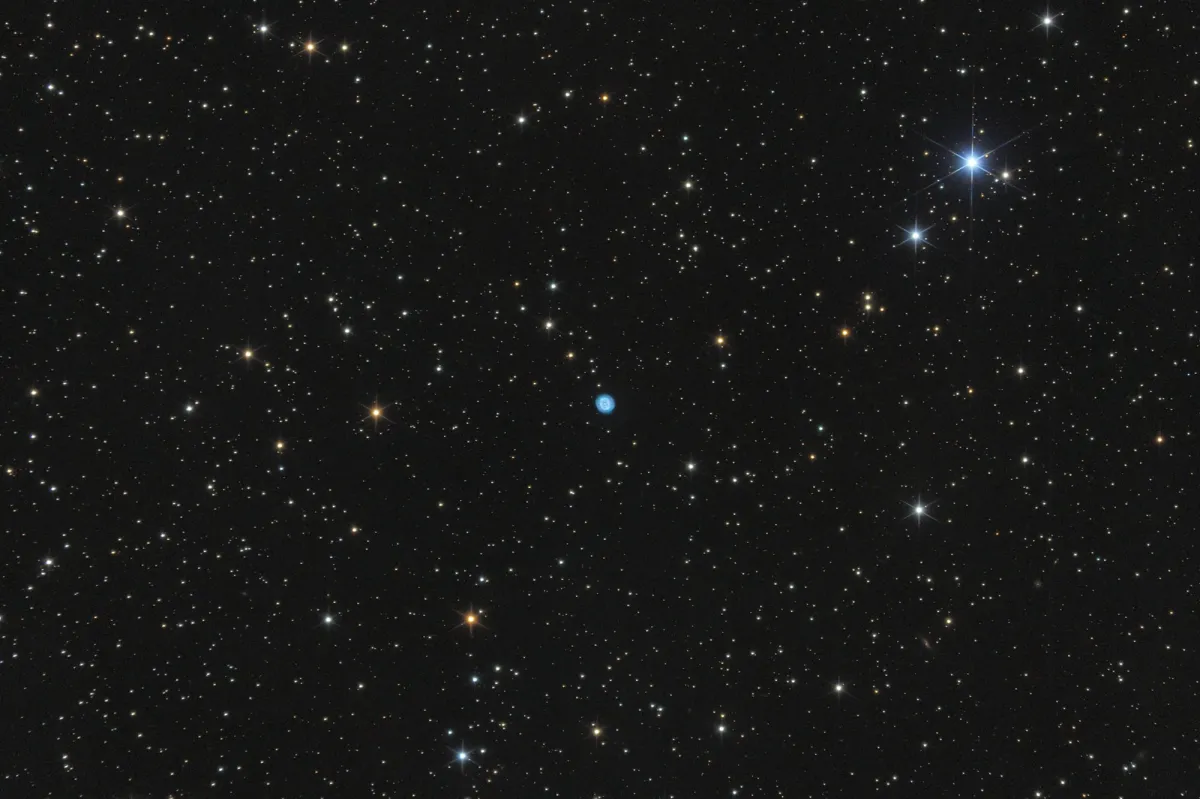
History
NGC 2022 was discovered on 28 December 1785 by William Herschel with his 18.7 inch reflecting telescope and cataloged as IV 34. He wrote about it: «Considerably bright, small, nearly round, like a star with large diameter, with 240x like an ill defined planetary nebula.» [464]
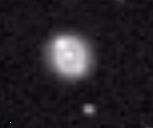
Physical Properties
NGC 2022 is a young planetary nebula with two visible shells. According to the Vorontsov-Velyaminov classification, it is described as a regular disk with a ring structure (IV, II).
Sabbadin et al. (Astron. Astrophys., 136, 193, 1984) have derived the following model for NGC 2022: The main part of the nebula is an oblate spheroid with moderate eccentricity. The axis ratio of length to width is 1.2. The whole complex is surrounded by a fainter, nearly spherical region that is expanding less rapidly than the central region. Assuming a distance of 2100 pc for the planetary nebula, this results in a diameter of 0.65 light years.
| Designations | PN G196.6-10.9: NGC 2022, PK 196-10.1, ARO 61, VV 23, VV' 34 |
| Right Ascension (J2000.0) | 05h 42m 06s |
| Declination (J2000.0) | +09° 05' 18" |
| Dimensions | 19." (optical) |
| Distance | 1.8 kpc |
| Radial Velocity | +14.0 ± 2.0 km/s |
| Expansion Velocity | 26. (O-III) km/s |
| C-Star Designations | AG82 49, HD 37882, PLX 1306 |
| C-Star Magnitude | B: 15.89 |
| Discoverer | HERSCHEL 1785 |
Finder Chart
The planetary nebula NGC 2022 lies in the constellation of Orion between Betelgeuse (α Orionis) and Meisse (λ Orionis). (one third of the way from λ Orionis to Betelgeuse, just under 2 degrees). Surrounding mag 3.4 Meissa are numerous stars arranged in a conspicuous pattern that appears to the unaided eye like a loose, open star cluster. From there you come across the small nebula after almost 2 degrees or about a third of the distance between Meissa and Betelgeuse. The best observation time is August to May.
Visual Observation
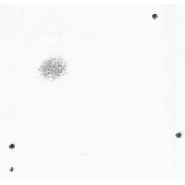
200 mm aperture: The PN appears as an almost circular object. At 80 km/h Mistral neither the ring nor the central star could be seen. The very small extent of NGC 2022 requires high magnifications and therefore reasonably good seeing.
250 mm aperture: Although only just visible at 50x, at high magnification the nebula reveals a ring-shaped disk about 25 arc seconds in diameter which appears completely black on the inside.
300 mm aperture: Here the nebula already looks less even. A slight elongation is visible at position angle 15 degrees, the extent of the structure is 25" x 20". There are bright points at the two outer ends of the ring, with the southern one appearing more conspicuous. At 450x magnification, the nebula is clearly ring-shaped but still lacks a central star.
